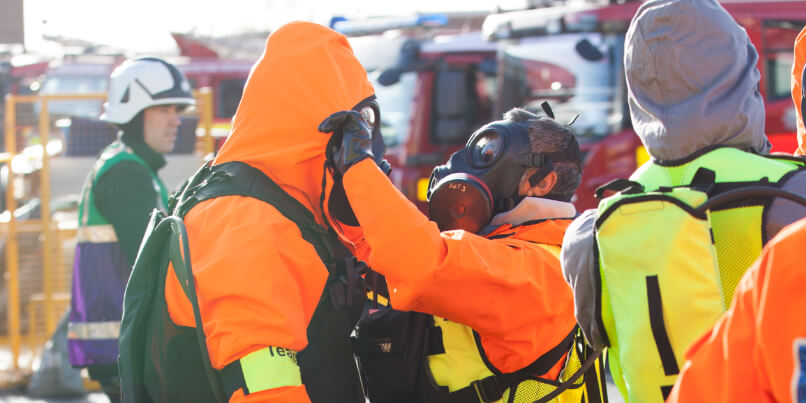 Effective chemical, biological, radiological and nuclear (CBRN) threat detection relies on ensuring that response personnel are fully confident in the use of their operational equipment before they step foot into a real-life hazardous situation.
Effective chemical, biological, radiological and nuclear (CBRN) threat detection relies on ensuring that response personnel are fully confident in the use of their operational equipment before they step foot into a real-life hazardous situation.
While essential knowledge can of course be gradually acquired through exposure to live incidents, the ability to handle vital CBRN detection equipment, and to interpret the readings that are obtained, is not something that can simply be 'picked up on the job.'
What is crucial is that CBRN personnel are able to demonstrate proficiency in the detection and identification of the full spectrum of threats - from volatile organic compounds and toxic industrial chemicals (TICs) to chemical warfare agents (CWAs), biological warfare agents and combustible gases.
Much headway has been made in recent years in bringing together standardised suites of mission-specific CBRN technology such as the CBRN dismounted reconnaissance sets, kits and outfit (DR-SKO) systems created by Flir.
The DR-SKO programme, which first went into development in 2008, provides the US Army, Navy, Air Force, Marines and WMD Civil Support Teams with access to highly-advanced CBRN dismounted reconnaissance capability, aiding in the countering of both current and emerging CBRN threats.
What has also been recognised however, is that alongside the procurement of these powerful CBRN detection support systems there is the need for a rigorous and sustained foundation of training and instruction.
Realistic training for modern CBRN threats
A key priority of any CBRN training programme is to ensure that operators develop proficiency in using their operational equipment - be it in configuring the various modes of their detectors prior to deployment, or understanding the importance of managing their sieve-pack consumables and sieve-pack life indicator test protocol.
Equally, there is the need for trainees to understand and experience the factors that can impact on the effectiveness of CBRN detection - recognising for example how the use of personal protective equipment (PPE) can affect their physiological, psychological and sensory abilities during a live incident.
In addition, it is also important that they are adequately trained in the use of their decontamination equipment and in the various resources that they will need for the marking, sampling and reporting of CBRN threats.
The ongoing challenge for instructors is to expose their trainees to the full range of potential CBRN threats in a way that is safe, realistic and easily repeatable.
Safe and repeatable CBRN training
Live training exercises can offer an invaluable opportunity for hands-on experience of chemical warfare agents and radiological hazards in an environment that is as near to actual life as possible.
But such training exercises can also have their limitations. Safety considerations mean there will be necessary restrictions on the quantities of CWA substances that can be used or the level of radiological source activity that can be employed - all of which in turn can dilute the effectiveness of the reading-related, decision-making experience for trainees.
Live exercises can also represent a significant expense for organisations. Choosing to use actual detectors carries with it a certain degree of risk in terms of compromising the operational readiness of that equipment and isn't generally the most practical setting in which to train personnel in the use of their actual detector equipment.
Taking control of CBRN scenarios
Increasingly CBRN instructors are turning to the use of CBRN simulator training systems in order to provide personnel with a way to train in the use of their actual operational systems.
Simulators offer several benefits - improving trainees' proficiency in the use of their equipment, enabling instructors to ensure that all actions have been correctly performed, and avoiding the risk of expensive damage to operational detectors.
Crucially too, simulators provide the opportunity for trainees to familiarise with their detection systems in realistic environments where mistakes can be safely made and where the parameters of training exercises can be tightly controlled.
Successful hazard identification and management relies on robust operational capability.
While a substantial amount of money is often spent on sophisticated CBRN-specific detection equipment it is also vital that these resources are put to best use by investing in the right training tools.
Procuring the latest detector equipment is just the first step.
What is also essential is that these valuable assets are supported by a rigorous programme of instruction that thoroughly tests trainees' practical knowledge and strengthens their operational skill.






